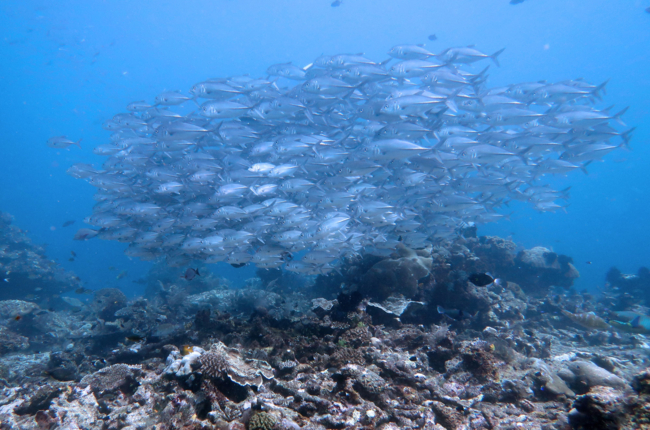25/10/2023 | As global marine biodiversity continues to decline, efforts to curb and reverse such losses and conserve our oceans are growing.
In December 2022, nearly 200 governments committed to protect at least 30 percent of the planet by 2030 as part of the new Global Biodiversity Framework. If “30x30” is successful, by 2030 the area of ocean that is protected will be 11 times the size of the United States. Yet, our understanding of the biodiversity impacts of protected areas and other managed areas has been limited until now. A new study led by the Wildlife Conservation Society (WCS) has investigated conservation outcomes for coastal ecosystems like coral reefs associated with both traditional protected areas and locally managed areas. Estradivari, an Indonesian marine scientist at the Leibniz Centre for Tropical Marine Research (ZMT) in Bremen, was also involved in the study.
While formally protected areas have well-recognized biodiversity benefits, they can be inadequate if they do not align with the needs and values of local communities. To achieve effective and equitable long-term conservation on the road to “30x30”, areas outside formally protected regions are being recognized in the conservation portfolio, including areas with local management by coastal communities.
The new study comes from a WCS-led Science for Nature and People Partnership (SNAPP) working group, and is out now in the journal Conservation Biology. Researchers worked with 126 communities from six coral reef countries and measured when conservation outcomes were achieved (e.g., more fish living on coral reefs) and how they were related to different types of managed areas.
Many sites within MPAs and other area-based management had relatively high fish biomass, and only some had low biomass. In average, both formally protected areas and areas managed by communities outside formal government protection, have higher fish biomass than areas with no management at all.
"With a rapidly growing population, our marine resources continue to be heavily exploited. Our study shows that areas with management, whether as MPAs or other forms of management, are more beneficial than unmanaged areas due to the conservation benefits they can provide”, says Estradivari. “To maximize the conservation benefits, it is crucial that managers understand the conditions that work best for their areas and implement management that is appropriate for the local context and needs."
This is one of the most detailed studies to show that diverse types of managed areas can have measurable outcomes for coral reef biodiversity and the human communities that depend on them, including areas that could be formally recognized as other effective area-based conservation measures (OECMs). These findings highlight that protecting marine ecosystems doesn’t stop at measuring the square miles or kilometers of protection. Measuring actual conservation outcomes, using indicators such as how many fish are in the area, is the only way we can truly assess the biodiversity impact of our efforts to manage and protect our oceans.
Publication
https://conbio.onlinelibrary.wiley.com/doi/full/10.1111/cobi.14156





